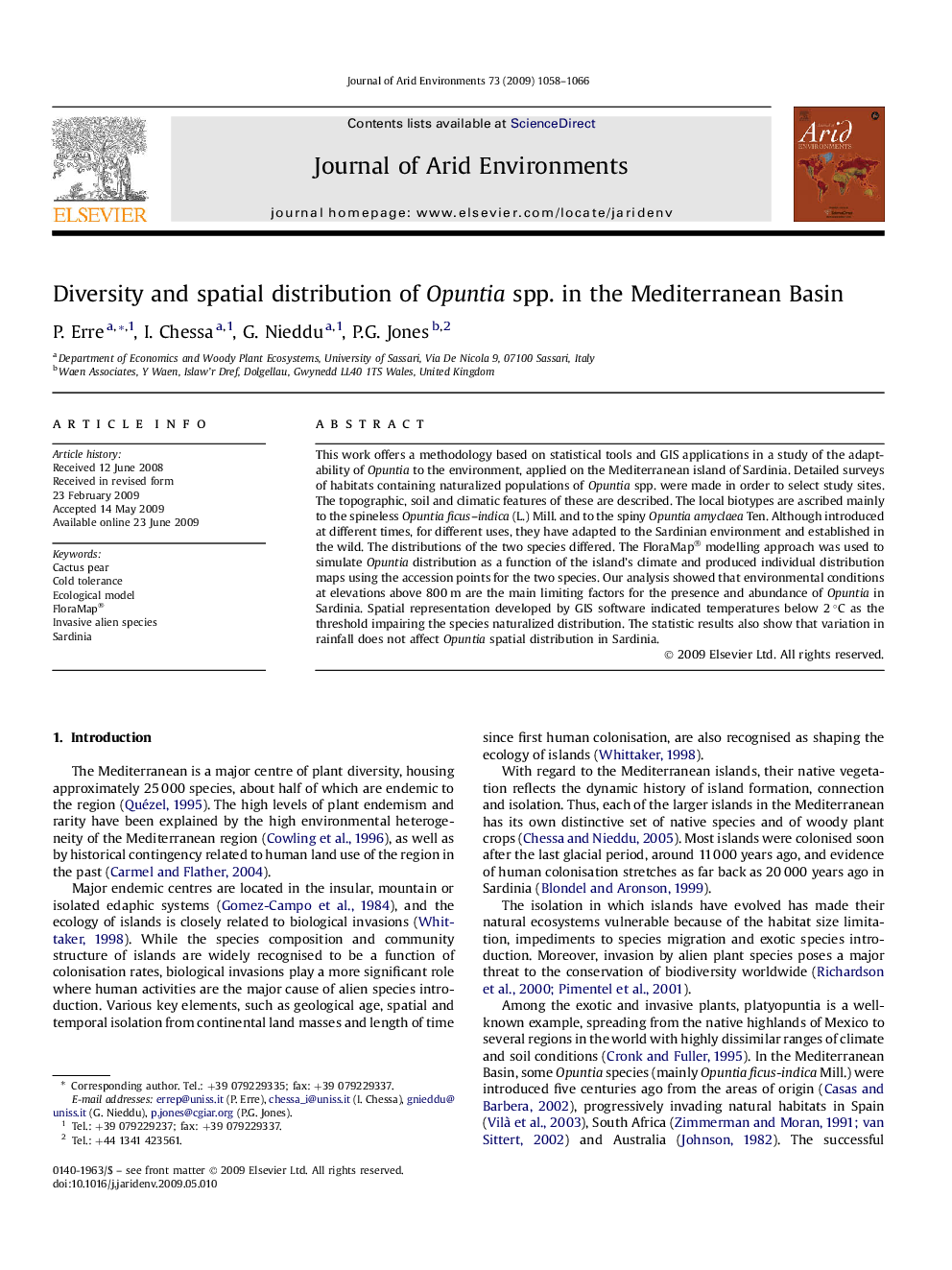| Article ID | Journal | Published Year | Pages | File Type |
|---|---|---|---|---|
| 4394056 | Journal of Arid Environments | 2009 | 9 Pages |
This work offers a methodology based on statistical tools and GIS applications in a study of the adaptability of Opuntia to the environment, applied on the Mediterranean island of Sardinia. Detailed surveys of habitats containing naturalized populations of Opuntia spp. were made in order to select study sites. The topographic, soil and climatic features of these are described. The local biotypes are ascribed mainly to the spineless Opuntia ficus–indica (L.) Mill. and to the spiny Opuntia amyclaea Ten. Although introduced at different times, for different uses, they have adapted to the Sardinian environment and established in the wild. The distributions of the two species differed. The FloraMap® modelling approach was used to simulate Opuntia distribution as a function of the island's climate and produced individual distribution maps using the accession points for the two species. Our analysis showed that environmental conditions at elevations above 800 m are the main limiting factors for the presence and abundance of Opuntia in Sardinia. Spatial representation developed by GIS software indicated temperatures below 2 °C as the threshold impairing the species naturalized distribution. The statistic results also show that variation in rainfall does not affect Opuntia spatial distribution in Sardinia.
